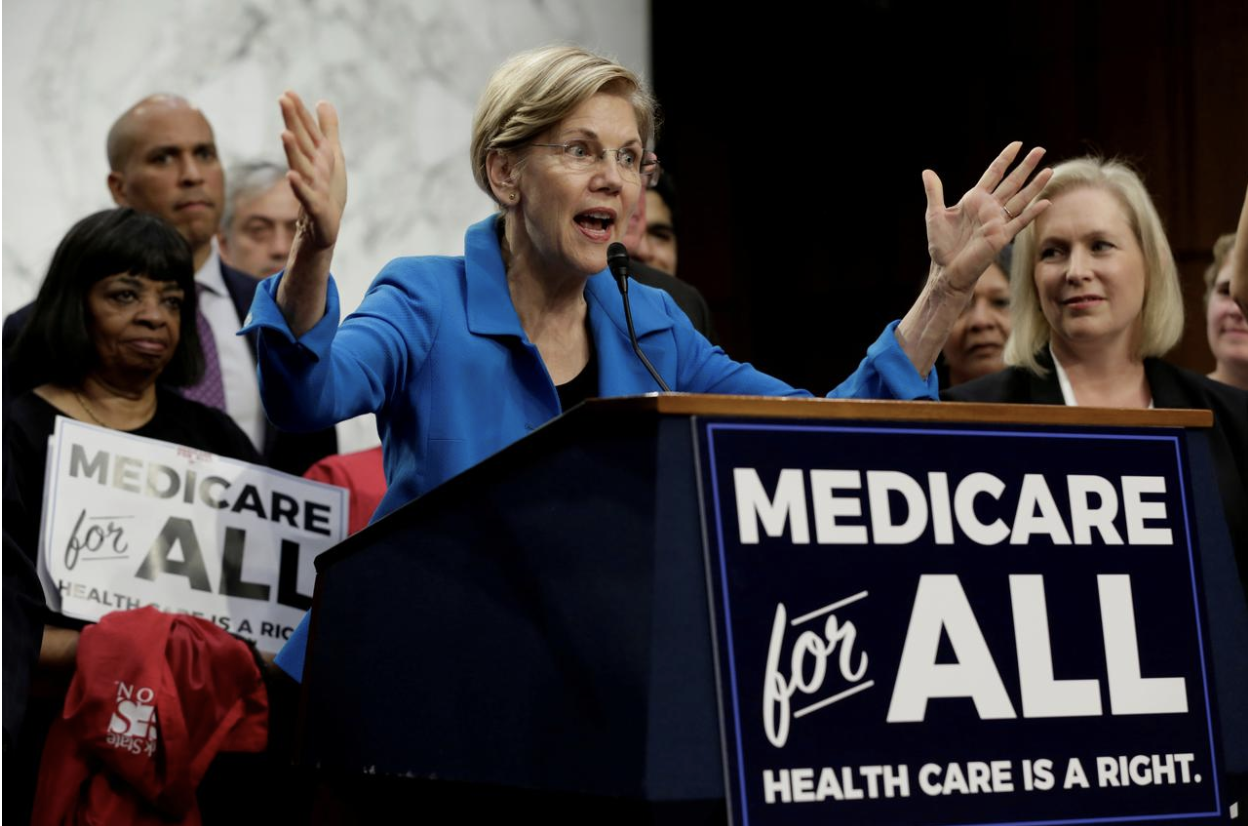
YASH RAJWANSHI – MARCH 19TH, 2020
EDITOR: ANDREW BABSON
Black Friday has created some of the most outlandish viral videos of the last few years. Thousands of shoppers flood retail outlets across the country in a shopping frenzy like no other. With sales starting earlier every year, Black Friday is an undeniable American tradition.
In recent years, however, the craze around Black Friday shopping has begun to diminish. In 2017 alone, foot traffic declined by 4%, and the year after, an even more severe decline of 9% was seen. Experts attribute this decline to various factors including a shift from brick and mortar shopping to online methods or even a longer holiday shopping season. To understand the ongoing trends with Black Friday shopping, we need to first consider why Black Friday exists in the first place and the opportunity that it represents for large retail stores such as Macy’s, Target, and Walmart.
A Little History
Black Friday has long been associated with Thanksgiving as a part of the holiday season. Beginning in the early 1900s, retailers such as Macy’s would utilize Thanksgiving parades to flaunt their success and to launch new holiday sales. The first such parade was held in Toronto by Eaton’s, a Canadian department store. Macy’s, inspired by the success of Eaton’s experiment, decided to hold their first Thanksgiving parade in 1924 as a symbol of their success during the economic boom of the Roaring 20s. As that weekend became more and more culturally relevant for US families, many people started taking the day after Thanksgiving off from work. They used this new four-day weekend to get a headstart on holiday shopping, creating new demand for retailers from a wide array of industries. Consequently, the Friday after Thanksgiving became a crucial economic moment for retailers. There are two key principles that enable Black Friday to be profitable for retailers despite the traditional severe lowering of prices: loss leaders and price discrimination.
Loss Leader Marketing
Loss Leader is a valuable marketing tool for businesses to generate brand loyalty and attract new customers. The idea of a loss leader is essentially selling a product at a loss to the retailer solely because the sale of that product will bring customers in the store and push them to walk past other products to reach the discounted item. In this sense, the sales of the other products that the customer will be drawn to should make up for the loss managed on the initial sale.
Moreover, retailers may bundle products that achieve similar goals and are complementary to each other together, which incentivizes the purchase of items that may not be on sale. Traditionally, the items linked with loss leaders will have higher margins, which helps recuperate the initial loss incurred by the business. Additionally, the fostering of future relationships with business due to loss leaders can add value to the strategy. For instance, if an individual purchases a computer at a severely discounted price, they may be more likely to purchase a warranty plan, as the net cost would still be relatively lower than the computer at its full price. This warranty may possibly lead to future transactions with the same customer and can create brand affinity within the consumer. If either of these occurs, the strategy is considered successful and the business comes out ahead.
The use of a loss leader is apparent in a multitude of marketplaces. Strong examples of this are consumable items such as razor blades of the eponymous razor-and-blade model in a shaving kit or cleaning sheets for a floor sweeper. The items with higher margins and that will be repeatedly purchased are the actual consumables, not the base units. For that reason, retailers and brands will often sell the base units, in this case razors and floor sweepers, at a discounted price to generate demand for the auxiliary items. Another example of this concept is milk at large grocery stores. Despite the milk generally not being sold at a loss, it will be strategically placed near the back of stores, so customers are forced to walk the length of the property to reach that item. In this sense, the milk serves as a loss leader as it is strategically manipulated and perhaps inferiorly placed in an attempt to draw in customers. During this process, other marketing campaigns such as signs and advertisements may pique the interest of a consumer and increase the likelihood of a purchase. Similarly, the retail giant Costco employs a loss leader strategy to generate a brand image as a low-price distributor. By selling discounts on gasoline, food, and a small proportion of in-store items, Costco has identified itself within the minds of customers as the retailer with lower prices and larger quantities. This brand image can place Costco at the forefront of the consumer’s mind when considering a purchase, which increases the likelihood of a sale.
On Black Friday, most retailers are employing some types of loss leader strategies to return a profit despite historically low prices. By discounting a select few items and placing them around the store, retailers can strategically place other products along consumers’ line of sight. In doing so, the sale of regularly priced items under the pretense of a storewide decrease in prices generates high returns. Using this, retailers are able to generate externalities to the purchases made on Black Friday to increase the probability of future transactions.
Price Discrimination Strategies
The second key concept to consider for the functionality of Black Friday is price discrimination. This idea rests on the assumption that consumers have varying levels of purchasing power and thus, are willing to pay different amounts for the utility that a good provides. This is what creates a product’s demand curve and defines its elasticity. If a retailer is able to price discriminate with 100% efficiency, then every consumer is paying the maximum they are willing to for the good being purchased. This removes all consumer surplus in a linear demand curve and maximizes producer surplus, which is the profit for the retailer. On Black Friday, retailers use heavy discounts as a simple form of price discrimination to reach untapped target markets and draw in consumers.
Consider a hypothetical scenario with a computer retail company, Compute, that only has two target customers. Consumer A has a high-income job and no dependents, and as a result, is willing to pay $2,000 for a computer. Consumer B, on the other hand, has a relatively low-income job and is supporting a family of four. Therefore, Consumer B is only willing to pay $1,000 for the same computer being offered to Consumer A. If Compute traditionally sells the computer at $2,000 to maximize its producer surplus from Consumer A, it completely neglects the opportunity represented by Consumer B. Heavy discount days such as Black Friday or Cyber Monday allow Compute to effectively target Consumer B while only seeing subpar returns on Consumer A purchases for a short period. For a single day, Compute may price the computer at 50% off, or $1,000. This maximizes the surplus from any Consumer B purchases and mitigates the possible loss from Consumer A purchases. In other words, by discounting the price of the computer to the maximum willingness to pay of Consumer B, Compute will access that market of new customers and make the maximum amount of money possible by charging them their highest willingness to pay. At the same time, because the computer is being sold at the highest possible price for Consumer B, Compute is minimizing the cost incurred from Consumer A saving money off the price they would traditionally pay. For this reason, Black Friday actually returns significant profits for the retailers by enabling them to reach target markets they would otherwise be unable to.
Despite the economic principles showing that Black Friday should be highly profitable for companies and consumers, recent data shows that participation in this tradition is declining. As mentioned earlier in the article, foot traffic continuously decreased from 2016-2018. This is all happening, however, as overall holiday sales continue to climb and individual consumers increasingly spend more money during the holiday season. Analysts have looked at possible pull factors for this decrease and often associated it with increases in online sales and a longer holiday shopping period. Surveys from the National Retail Federation in 2018 show that more and more consumers are less focused on completing all their holiday shopping on a single day and rather spreading it out over a longer period. As a result, the craze of in-store Black Friday deals has lost some traction among shoppers in America. Moreover, in attempts to capture consumers from competitors, retailers have started releasing holiday deals earlier into the season. This spreading of the holiday shopping season ultimately means consumers have less money to dedicate to a specific later date of purchasing, leading to decreases in Black Friday sales. The other key pull factor here is the rise in online alternatives to brick and mortar shopping. The sophistication of online distribution methods such as Amazon means consumers can more easily compare options, prices, and still receive similar discounts. For that reason, an NRF study found that a majority of shoppers used a combination of online and in-store shopping. Another report from Adobe Systems predicted that online sales on Black Friday would increase by more than 14% from 2017 to 2018. Clearly, shopping is quickly being digitized and is moving away from brick and mortar stores.
An excellent demonstration of this trend towards e-commerce platforms is the rising popularity of Cyber Monday, an online-shopping exclusive parallel to Black Friday. Created just over a decade ago, the major shopping day has experienced year-over-year growth since its inception. In 2019, Cyber Monday drew in 83.3 million shoppers, just 10 million less than its retail-based counterpart. Additionally, overall money spent on Cyber Monday increased by nearly 20% from 2018 to 2019, a rise even more significant when compared to the losses witnessed by Black Friday with the same metric.
So, What’s Next?
Ultimately, Black Friday remains an American tradition and will continue to be so in the coming years. An NRF survey estimated that 88 percent of shoppers aged 18-24 say they will shop and enjoy the social aspect. Clearly, the future generation of discount shoppers continues to believe in the sentiment surrounding the day and consequently, Black Friday will remain a mainstay of the average retailer’s most important dates. However, if recent trends point to anything, the folklore may soon exceed the practicality surrounding Black Friday and the exorbitant sales that come with it.
Featured Image Source: Business Insider
Disclaimer: The views published in this journal are those of the individual authors or speakers and do not necessarily reflect the position or policy of Berkeley Economic Review staff, the Undergraduate Economics Association, the UC Berkeley Economics Department and faculty, or the University of California, Berkeley in general.



